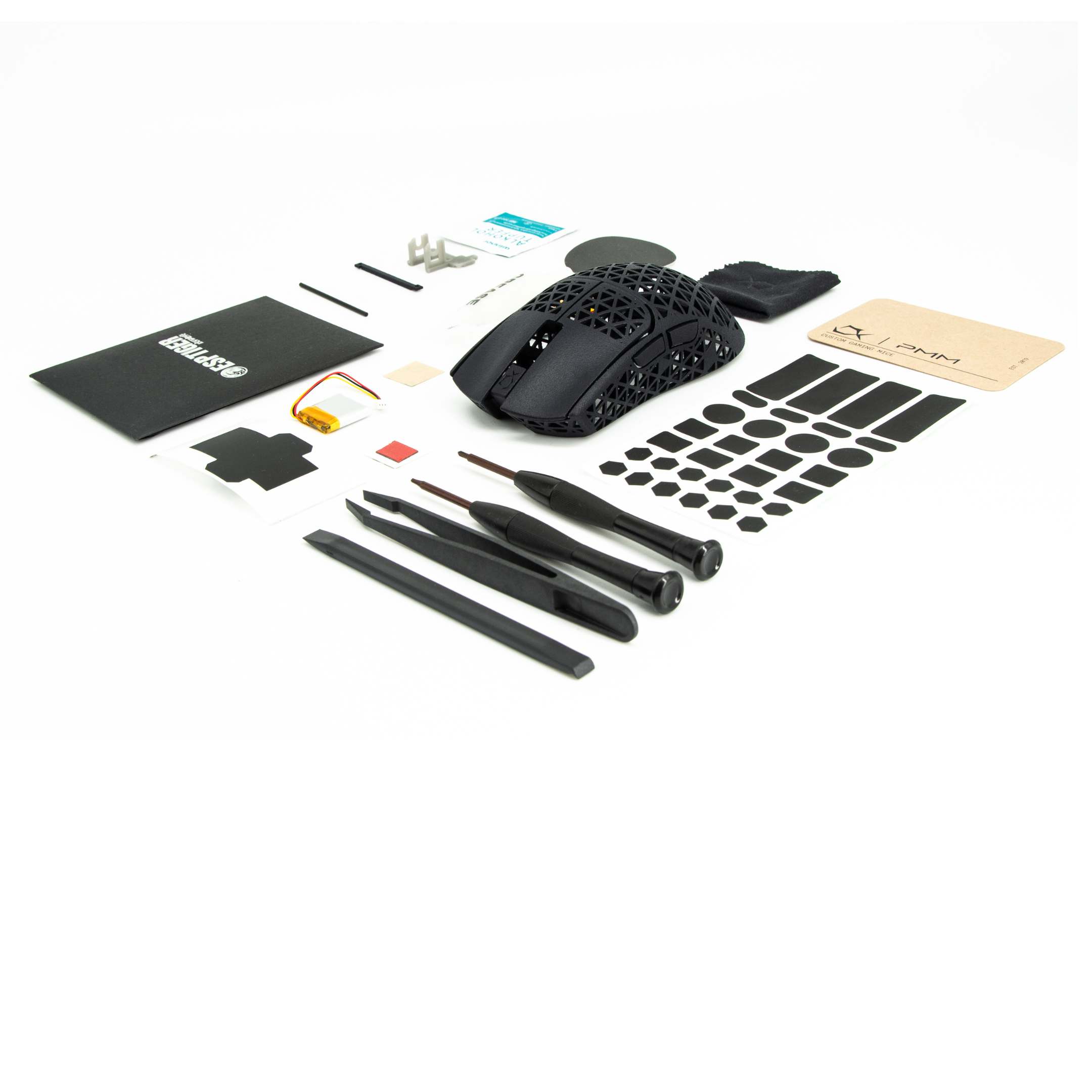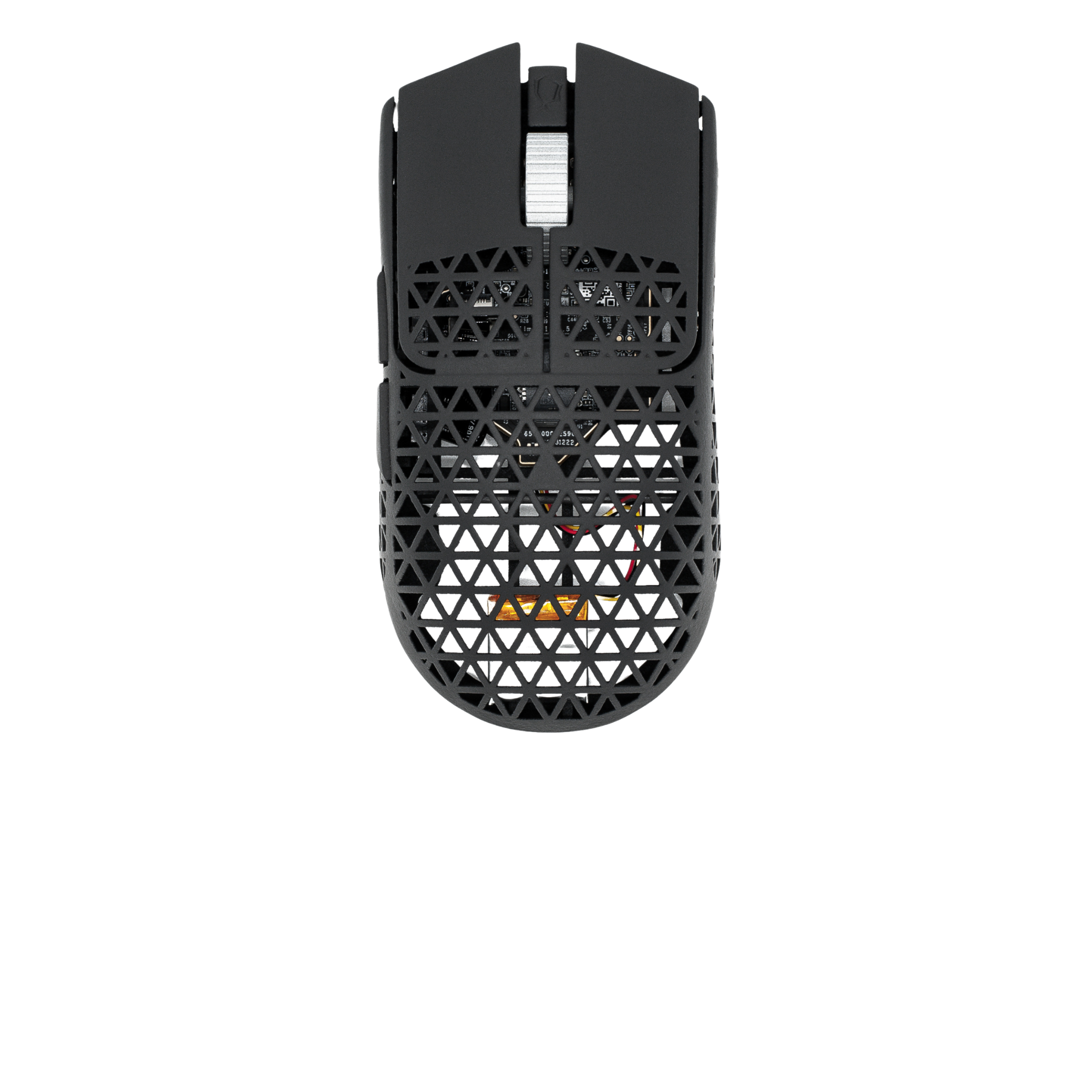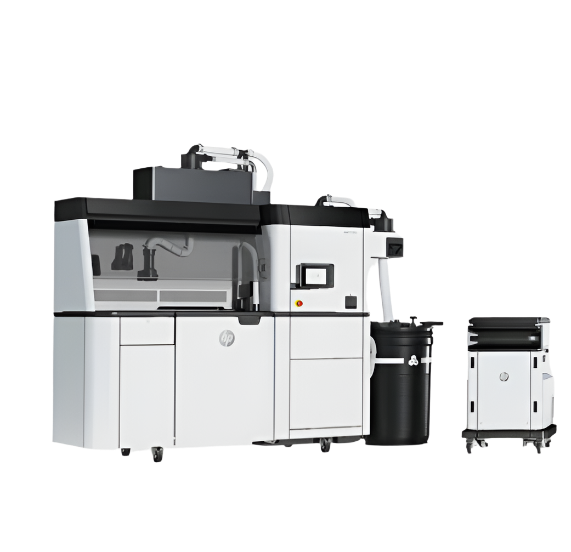Introduction
One crucial part of a PMM mouse is it's shell. It is 3D printed with PA 12 (Nylon) powder. The technology is called Multi Jet Fusion (MJF) and the printer comes from HP. Multi Jet Fusion (MJF) is a 3D printing technology which launched in 2016. It builds on HP's long history with inkjet printing, using advanced techniques to create detailed and durable parts. MJF uses a liquid binding agent to fuse powdered polymer materials layer by layer. The name comes from the multiple inkjet heads that distribute this binding agent. This process is quick and precise, making MJF one of the most reliable 3D printing methods available today.We use this technology to make the mouse weigh less than the original shape it is inspired from, but still have a sturdy shell and a good click feeling. PMM develops special inner structures to achieve this. This would not be possible with injection molding, the method how industrial, normal gaming mice are made. In general, 3D printing, also known as additive manufacturing, is a game-changer in how things are made. This method starts with a digital design, which the 3D printer then brings to life by adding material layer by layer. This process allows for creating complex shapes and custom designs.
The Printing Process
MJF printing is a form of binder jetting. Binder jetting 3D printing involves using a liquid material, jetted by an inkjet printhead, onto layers of powdered material. Traditionally, binder jetting with plastic or polymer is a "cold" process, but HP (and a few others) introduced heat into the process, which significantly changes how it works. This unique approach sometimes puts MJF in a category of its own.
In the MJF process, the printer spreads a layer of powder material on the printing bed. Then, an inkjet head moves across the powder, applying a fusing agent and a detailing agent according to the digital design of the parts being printed.
An infrared heating unit also moves across the print bed. Where the fusing agent is applied, the powder melts and fuses together. The areas where the detailing agent is applied don’t fuse completely, which helps ensure the surface quality. The powder that isn't touched by any agent stays loose and supports the fused material, usually eliminating the need for additional supports.
Once printing is done, the entire powder bed, including the printed parts, is moved to a separate station. Here, most of the loose, unfused powder is vacuumed up and can be reused, reducing waste.
MJF printing is a form of binder jetting. Binder jetting 3D printing involves using a liquid material, jetted by an inkjet printhead, onto layers of powdered material. Traditionally, binder jetting with plastic or polymer is a "cold" process, but HP (and a few others) introduced heat into the process, which significantly changes how it works. This unique approach sometimes puts MJF in a category of its own.
In the MJF process, the printer spreads a layer of powder material on the printing bed. Then, an inkjet head moves across the powder, applying a fusing agent and a detailing agent according to the digital design of the parts being printed.
An infrared heating unit also moves across the print bed. Where the fusing agent is applied, the powder melts and fuses together. The areas where the detailing agent is applied don’t fuse completely, which helps ensure the surface quality. The powder that isn't touched by any agent stays loose and supports the fused material, usually eliminating the need for additional supports.
Once printing is done, the entire powder bed, including the printed parts, is moved to a separate station. Here, most of the loose, unfused powder is vacuumed up and can be reused, reducing waste.
Here's why 3D printing with MJF is a big deal for us:
Rapid Prototyping and Innovation
3D printing allows for quick prototyping, so our designers can test and refine new mouse designs faster.
We use Feedback from Pro Players and incorporate it into new designs, leading to continuous improvements.
Lightweight and Durable Designs
MJF makes it possible to create shells that are lightweight but strong. This means less hand fatigue and quicker, more precise movements.
The material PA 12 used in MJF is super durable, ensuring the mouse can handle intense gaming and last a long time.
Rapid Prototyping and Innovation
3D printing allows for quick prototyping, so our designers can test and refine new mouse designs faster.
We use Feedback from Pro Players and incorporate it into new designs, leading to continuous improvements.
Lightweight and Durable Designs
MJF makes it possible to create shells that are lightweight but strong. This means less hand fatigue and quicker, more precise movements.
The material PA 12 used in MJF is super durable, ensuring the mouse can handle intense gaming and last a long time.
Customization and Ergonomics
3D printing makes it easy to design mice that fit perfectly in your hand, enhancing comfort and boosting performance. We can design a mouse with unique preferences when it comes to the shape, size, and feel of the mice.
Sustainability and Efficiency
Additive manufacturing is more eco-friendly because it produces less waste compared to traditional manufacturing methods.
Making products on demand reduces the need for large inventories, saving storage space and cutting down on waste from unsold items.
Customization and Ergonomics
3D printing makes it easy to design mice that fit perfectly in your hand, enhancing comfort and boosting performance. We can design a mouse with unique preferences when it comes to the shape, size, and feel of the mice.
Sustainability and Efficiency
Additive manufacturing is more eco-friendly because it produces less waste compared to traditional manufacturing methods.
Making products on demand reduces the need for large inventories, saving storage space and cutting down on waste from unsold items.
Despite its advantages, MJF also has some drawbacks. One of the main challenges is the expensive cost per unit because the printer and the material are very expensive.
The technology also has limitations in producing certain geometries, such as some curved, hollow shapes, which might necessitate alternative methods. Another consideration is the default color of the final product. MJF typically produces gray parts unless dyed post-processing.
In summary, while MJF offers fast, accurate, and cost-effective 3D printing with minimal waste and high design flexibility, it requires a substantial initial investment and has some material and geometric limitations.
Design Possibilities
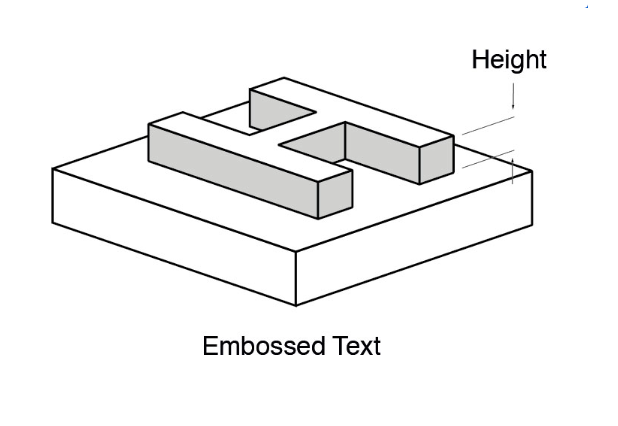
With MJF, you can print high-resolution texts, numbers, and drawings.
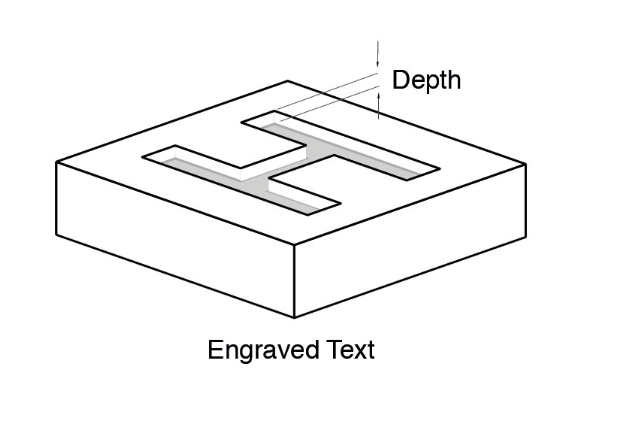
It is possible to print small lattice structures, as well as topology optimised-generative designs. Such designs help reduce the quantity of material used and the weight of the part. This translates to significant cost and weight saving.
Real-world applications
Automotive
MJF 3D printing is revolutionizing the automotive industry by reducing production costs and increasing efficiency. At Jaguar Land Rover, engineers are not only making brackets and interior trims but also developing next-gen protective gear for factory workers using MJF. General Motors has integrated HP MJF machines in their new 15,000-square-foot Additive Industrialization Center to produce prototype parts, tools, fixtures, and end-use components.
MedTech
HP and its partners have 3D printed over five million parts to address urgent needs, enabling local manufacturing and bridging supply chain gaps. One can create custom dental molds, custom orthotic and prosthetic devices using HP's white PA12, which allows for vibrant post-printing coloring, especially beneficial for pediatric care. Additionally, OVR Technology uses MJF to create complex, detailed housings for VR devices.
Consumer Goods
The consumer goods sector benefits from MJF's ability to produce low-volume parts with intricate designs. PepsiCo utilized MJF to design a detailed, durable mask for drink cans, as part of a tie-in with the Black Panther movie, achieving the required fine details and deep black color. In the sporting goods and eyewear industry, companies like Oakley and Smith are leveraging MJF to streamline product development. Oakley uses it to enhance their eyewear and athletic equipment, while Smith's custom-fit 3D printed frame for the I/O MAG Imprint ski goggle was recognized as one of Time Magazine’s Best Inventions of 2022.
Other production technologies
The advent of 3D printing technologies has significantly facilitated the growth of rapid prototyping, allowing for the creation of functional prototypes quickly from digital 3D models. There are several methods for printing objects, parts, and prototypes in 3D printing, including: Fused Deposition Modeling (FDM), Stereolithography(SLA), Selective Laser Sintering (SLS), Multi Jet Fusion (MJF). These stand in contrast to the traditional way to produce plastic parts: injection molding.
FDM Technology is well-known for its cost-effectiveness, making it an affordable choice both for the materials and the printers themselves. However, it often falls short in precision and speed, which can be limiting for projects that require detailed work or quick turnaround times.
SLA Technology is great for producing complex parts that are still relatively cheap. A big drawback are the mechanical properties. The parts are often too brittle to be used as product parts. Another point of criticism is it's poor dimensional accuracy. The technology is great for prototyping though.
SLS Technology stands out for its excellent price-performance ratio and strength, making it suitable for creating functional prototypes. It also can produce smooth surfaces without visible layer lines. The downside is that the overall process can take longer, the dimensional accuracy is not as good as MJF and the stiffness of the parts are not as good.
Injection Molding is praised for its high dimensional accuracy and cost-effectiveness in high-volume production. The major drawback is the high initial cost of creating molds, which can be a barrier for small production runs or custom parts. The design of the parts also has big limitations since it must be possible to remove the part from the mold.
Conclusion
Each production technology has its unique strengths and weaknesses. FDM is cost-effective and great for simple prototypes, but it lacks precision. SLA allows complex parts for a low price but lacks the durability for actual product parts. SLS offers an excellent price-performance ratio but has longer lead times and lacks quality. Injection molding is ideal for high-volume production but comes with high initial costs. MJF stands out for its speed, precision, and quality, though the range of materials is still growing. Nevertheless, MJF is a game-changer in the world of 3D printing. It combines precision, speed, and flexibility with materials to create detailed and strong parts. The key benefits of MJF are its high resolution, fast production times, and ability to handle complex shapes, making it a great choice for industries looking to innovate in manufacturing.
Learn more
Additional Resources

